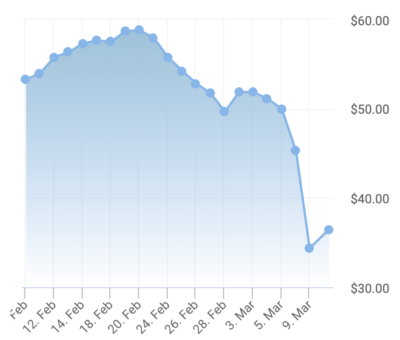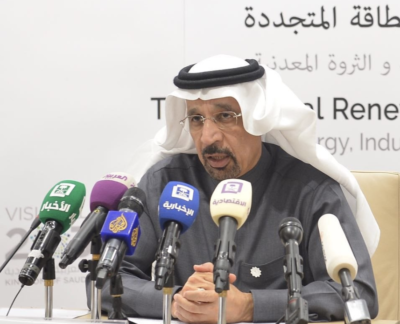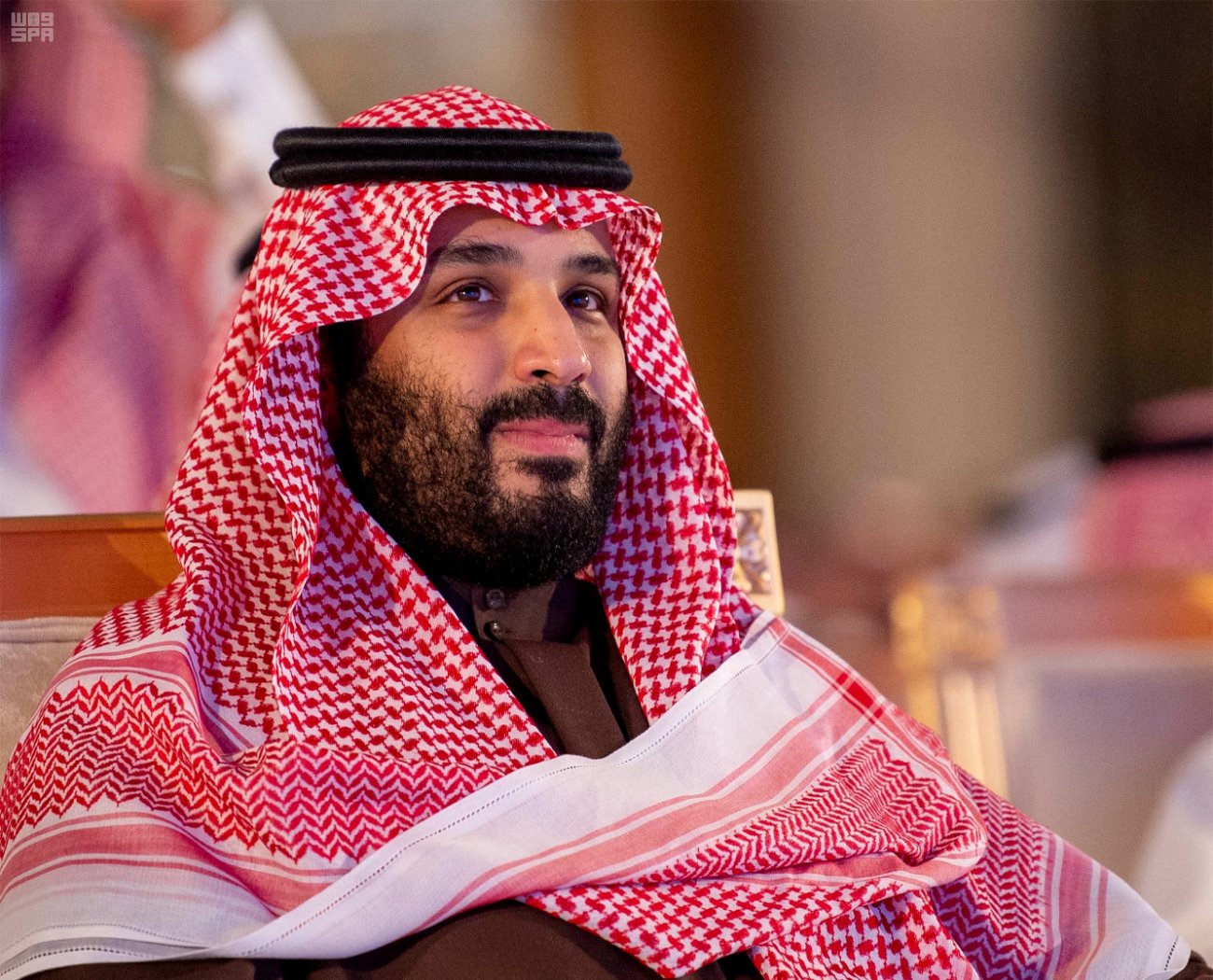Saudi Arabia and Russia dug in on the potential for an oil price war on Tuesday, with each indicating they are willing and able to open the spigots after the two sides failed to reach an agreement on supply curbs which sent global markets to major losses, according to reports.
On Tuesday, the Kingdom’s state-run Saudi Arabian Oil Company said it would boost production to 12.3 million barrels a day in April.
President Trump called Crown Prince Mohammed bin Salman by phone before the Saudi crown prince escalated the oil-price war Tuesday by increasing production, two people familiar with the call told Bloomberg.

Oil rebounded today roughly 6% after yesterday’s fall.
“Good for the consumer, gasoline prices coming down!” Trump tweeted at 10:36am yesterday. At the same time, in a separate tweet, he added, “Saudi Arabia and Russia are arguing over the price and flow of oil. That, and the Fake News, is the reason for the market drop!”
Trump’s Department of Energy, in a statement, blasted Saudi Arabia and Russia, but did not call either out by name. DOE denounced “attempts by state actors to manipulate and shock oil markets.”
But despite a potential drop in gas prices for U.S. consumers, For the U.S. oil industry, “this is a historic crisis,” writes Nick Cunningham in oilprice.com, noting that if the situation continues, 50% of shale producers in the United States could go bankrupt.

Khalid Al-Falih.
For the Saudi Arabia and Russia, neither side wants to see oil prices plummet. But Russia is concerned that any oil price cuts would be made up by the U.S. shale industry, reducing their effectiveness. One analyst, Alexander Dynkin, president of the Institute of World Economy and International Relations in Moscow, a state-run think tank, said the Kremlin concluded further cuts would be, “a gift to the U.S. shale industry which had had added millions of barrels of oil to the global market while Russian companies kept wells idle,” according to a report in the Los Angeles Times.
“Now it was time to squeeze the Americans.”
Although the two sides are at an impasse, both kept the door open to talks that could lead to a resolution.
According to Reuters, the Kremlin said on Tuesday that “nobody was excluding the possibility that Russia and Saudi Arabia could resume negotiations about oil output cooperation despite talks on the subject ending in acrimony on Friday.”
And, on the Saudi side, the Wall Street Journal reports former Saudi energy minister Khalid al-Falih “was in talks with Mr. Novak in an attempt to reverse the production hikes and revive the collective OPEC-Russia output curbs,” citing Saudi-government advisers and officials.
The report continued: “Mr. Falih, who negotiated the initial production cuts in 2016, is now Saudi Arabia’s minister of investments. His outreach to Mr. Novak is done with the approval of Saudi authorities, the advisers said. If Mr. Falih’s mediation succeeds, the advisers and officials said, OPEC and its allies including Russia will convene an emergency meeting in April…Mr. Novak said Moscow isn’t ruling out further cooperation with OPEC, adding that the next scheduled meeting is planned for May or June.”
Saudi Aramco saw nearly $320 billion in value wiped out in just two days. According to Reuters, the government promised investors one bonus share for every 10 they bought if they held on to their stock for 180 days.
Additionally, Saudi Arabia’s state budget is still dependent on oil revenues, despite major achievements toward diversifying its economy away from oil with its Vision 2030 economic and social reform plans. One Wall Street Journal reporter, Summer Siad, tweeted out today that earlier this week; “officials at the finance ministry were tasked to prepare a budget scenario that envisions benchmark Brent crude prices dropping into a $12-$20 a barrel range. All Saudi ministries were also asked to cut their spending significantly to prepare for this scenario.”
Crude oil prices have bounced back over 6% today on both the WTI and Brent indices.









